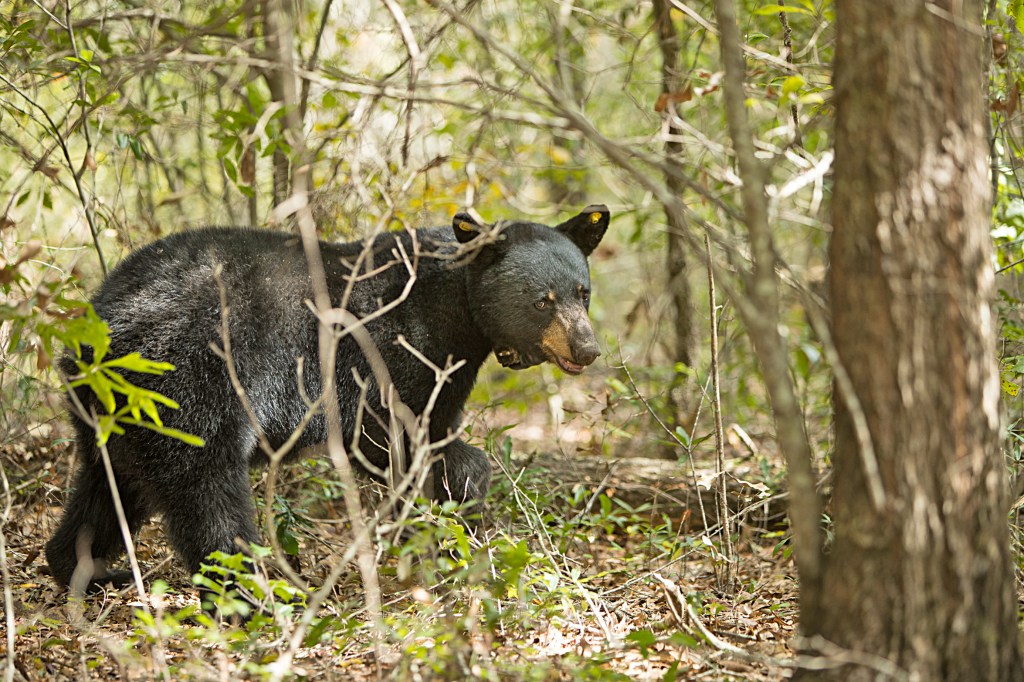Black bear sighting reported in Limestone
Published 6:30 am Thursday, July 19, 2018

- The Alabama Department of Conservation and Natural Resources announced this week black bears have been seen in Limestone, Marshall, Morgan and St. Clair counties. There are about 350-500 black bears in Alabama.
Limestone County’s mostly flat landscape may not seem like the perfect habitat for a black bear, but at least one sighting has been reported here this year.
The Alabama Department of Conservation and Natural Resources announced this week black bear sightings had been reported in Limestone, Marshall, Morgan and St. Clair counties in 2018. A wildlife biologist said there’s nothing unusual about the reports of sightings.
Trending
“We get two-to-five bear reports per week,” said Marianne Hudson, conservation outreach specialist for the Alabama Division of Wildlife and Freshwater Fisheries (WFF). “They can be seen anywhere.”
Hudson said there are about 350-500 black bears statewide, though most of them can be found in a few concentrated areas — northeast Alabama, southwest Alabama and along the Florida border.
Biologists say the increase in sightings may be due to a combination of factors including changes in bear distribution, habitat fragmentation, seasonal movement and the summer mating season.
“What’s happening is young bears are dispersing from their mother, wandering and basically finding a new place to set up,” Hudson said. “It’s completely normal to see bears anywhere, especially in the summer.”
Sightings recorded
Bear sightings, along with other wildlife reports, are recorded in a ADCNR database. Information about the specific location of the black bear sighting in Limestone was not immediately available this week.
Trending
She explained that while seeing a bear in the wild is “uncommon and exciting,” it isn’t a cause for alarm. She added there has never been a black bear attack on a human in Alabama. Black bears are typically secretive, shy animals that will avoid human interaction. Occasionally, a curious bear will explore a human-populated area in search of food.
“If you are lucky enough to see a bear, simply leave it alone,” Hudson said.
If you see a bear
Below are tips on what you should do if you encounter a black bear and how to avoid attracting one to your property:
• Do not run from the bear;
• Avoid direct eye contact with the bear;
• Encourage the bear to move away by waving your arms and yelling as you slowly back away;
• Make sure the bear has an unobstructed direction to escape;
• In the unlikely event of an attack, fight back. Never play dead;
• Never approach or purposely feed a bear;
• Store all food indoors or in a bear-resistant container;
• Do not leave pet food outside overnight;
• Keep trash cans clean and don’t put trash out until the morning of pick up; and
• Avoid feeding birds and other wildlife from April to January when bears are most active.
For more bear safety tips, visit www.bearwise.org.
Reporting a bear
Those who have seen a bear in their neighborhood, on their property, or crossing a road are encouraged to report the sighting to the local WFF District Office in Tanner at 256-353-2634. The information helps biologists document black bear movement and distribution in Alabama.
Bear sightings can also be reported online at https://game.dcnr.alabama.gov/BlackBear or by email to Thomas Harms at Thomas.Harms@dcnr.alabama.gov.
Penalties for shooting
In Alabama, black bear is a species of highest conservation concern with no open season. Shooting at one is a Class A misdemeanor. Other penalties for shooting at a black bear include the potential loss of hunting and fishing license privileges for three years and possible jail time.




